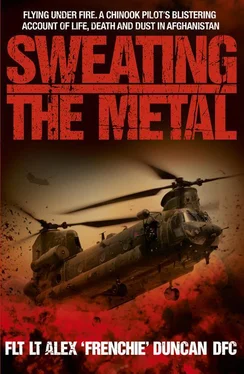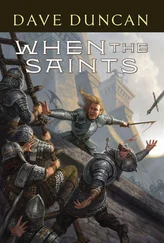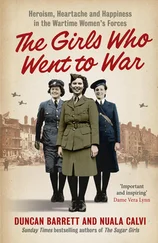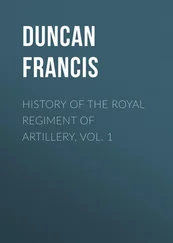Compared to being at home, yes it is. But the reality is that you’re six degrees of separation from mortal danger, all depending on where you are and what you’re doing in theatre. Those degrees start inside the wire at Bastion, where the biggest danger is from the sun or the dreaded D&V rather than bullets, RPGs and IEDs. The risk is marginally greater at KAF with its regular rocket attacks, but even then it’s not really anything to worry about. Although we’re airborne and we get shot at, it’s a known quantity; I’m in a familiar environment, we’re a moving target and to a degree, as pilots, we’re masters of our own destiny because we can fly tactically – making ourselves harder to hit. To most of us, the risk is negligible compared to that experienced by the real heroes – the guys and girls living in the FOBs out on the front line who patrol and are close to contact with the Taliban every day. That’s how we were able to sit in the cab while the rounds flew, watching the display through our NVGs, and waiting for the casualty to be brought on board.
We couldn’t have been on the ground for more than about two minutes. The MERT team reappeared with the casualty, the QRF came back on, and as soon as the ramp closed we got the familiar call of ‘Clear above and behind’ from Jim. We never, ever chase them with calls of ‘How long?’ We’re a crew, we work together, and it’s a given that nobody wants to stay on the ground one second longer than we need to. Helicopters belong in the sky and that’s where we want to be so, while it varies from boring to downright fucking scary to be sat on the ground in the goldfish bowl that doubles as a cockpit, we know that the crewmen will tell us we’re good to go the second it’s appropriate.
We got back to Bastion without incident and delivered the casualty to Nightingale, but I don’t think we’d even sat down in the IRT tent when the next shout came in: two casualties – Afghan nationals, both categorised T1s. A suicide bomber had walked up to an ANP checkpoint near Gereshk and blown himself up. It’s a quick run from Bastion to Gereshk so we were there and back within thirty minutes.
We shut down, got back to the IRT tent and twenty minutes after landing we were all in bed for, unusually, an uninterrupted night’s sleep.
There’s a book out there called The Eighth Passenger by Miles Tripp and it’s a stunningly eloquent and articulate account of his life as the bomb aimer on a Lancaster in World War II. It’s so called because the Lancaster flew with a crew of seven; the eighth passenger was fear.
There is a mission that German and I flew early in August that really brought that home to me. Fear was my fifth passenger on that sortie and for me, it perfectly illustrated the maxim that it’s not always about what actually happens; we’re all wise after the event. How we feel is more often dictated by what’s known at the time.
The mission involved us supporting a major offensive over four days with the objective of putting some pressure on the Taliban in the Upper Gereshk Valley. The aim was for ground troops to probe and patrol through the Green Zone to try to reduce the number of attacks on FOB Inkerman, which was being attacked every day at around 13:00 hrs with multiple mortar rounds, RPGs and small arms fire. The guys inside were living a miserable existence.
We were flying as a four-ship gaggle – two Apaches to support two cabs; Eurotrash in one, JP and Morris in the other. For this particular mission, almost two companies of Royal Anglians needed moving over a short distance of something like a mile and a half. They were on the eastern side of the Helmand River and needed to be somewhere on the western side, because they wanted to investigate what intelligence suggested was a Taliban front line combat hospital.
The plan was to land two Chinooks in a cultivated field that was completely surrounded by trees. Tactically, it was far from ideal because the HLS was looked on from all four sides and the trees provided perfect cover for the Taliban, but that’s how it had to be; the troops we were lifting were at that location. Once we had them aboard, we would fly them across the Helmand River and land in the middle of a field full of maize. That field was just at the bottom of a hill, which was where the building they were going to investigate was sited.
The mission was risky and my biggest concern was the fact that the sortie was over such a short distance. Given the density of Taliban forces in the Green Zone, if we were landing inside, loading troops and flying them just a mile and a half, we’d be low and slow for most of the flight – the worst combination of all. We’d be lucky to fly at more than eighty to a hundred knots, making us an inviting target, and if Taliban forces were anywhere close, they’d have to be fast asleep or blind and deaf to miss us. To make matters worse, we had a huge number of troops to move – almost two companies’ worth – so we were looking at three separate trips to get them all across.
JP was flying the lead cab and he’d come up with a plan routing us along the western side of the river. Sangin is on the eastern side of the Helmand River with a wadi running east to west on the northern side, and on the western side there were some pretty steep cliffs with some very deep cuts – steep-sided, deep valleys really. The plan was for us to set down on the flat desert floor about three miles or so out on the west side of the river and, once cleared in, to approach the pick-up point by flying along the valley floor, which was just deep enough that you could fly a Chinook and it would be completely hidden from view. That element would turn out to be one of the most exciting bits of flying I’ve ever done in theatre; it was just like the scene in Star Wars when the Rebellion Alliance pilots are flying the X-Wing fighters through the Death Star’s canyons as they try to destroy it.

As we come in, I can see there are some British troops in position on top of the cliffs. They are out of sight to any Taliban forces in the Green Zone. They’ve approached from the desert side and are in Jackals; they are there to cut off any Taliban who escape once the main thrust of the attack on the hospital has come in from the west. I see that one of the Jackals is on fire following a mine strike; it does not do anything to calm my nerves.
The Apaches are on station providing overwatch; they clear us in. We have a time on target – it’s all calculated by JP, who is a brilliant tactician, so we know it’s going to be dead on. We are familiar with his methods – ‘You’re going to come in on this heading at this speed for this amount of time, and then throttle back on this heading on the approach.’ Let’s say you normally fly the approach at 120kts for three miles. You decelerate for the last mile and you’ll average 60kts, so you’ll be in the gate at the target. So JP has worked all that out to the last second and, as usual with him, that’s where we are; time on target is exactly as he’d planned.
The wadi we are flying through on the run in is very narrow and very deep so JP goes in ahead. Because we want to arrive close together, I am as close behind his cab as I dare – certainly no more than twice the span of our rotors. And when I say that valley is narrow, there can’t be more than the width of one rotor either side of us, so there is no room for error. Luckily it’s dead straight, because there isn’t enough width for us to effect a tight turn – the rotors are simply too close to the valley walls. Tactically, you could argue it isn’t brilliant, but it is the best option and with the Apache on overwatch, as good as it gets. JP has chosen this particular wadi for the run in because it is stripped of vegetation, so there is absolutely no cover and nowhere for any Taliban to lie in wait.
Читать дальше













